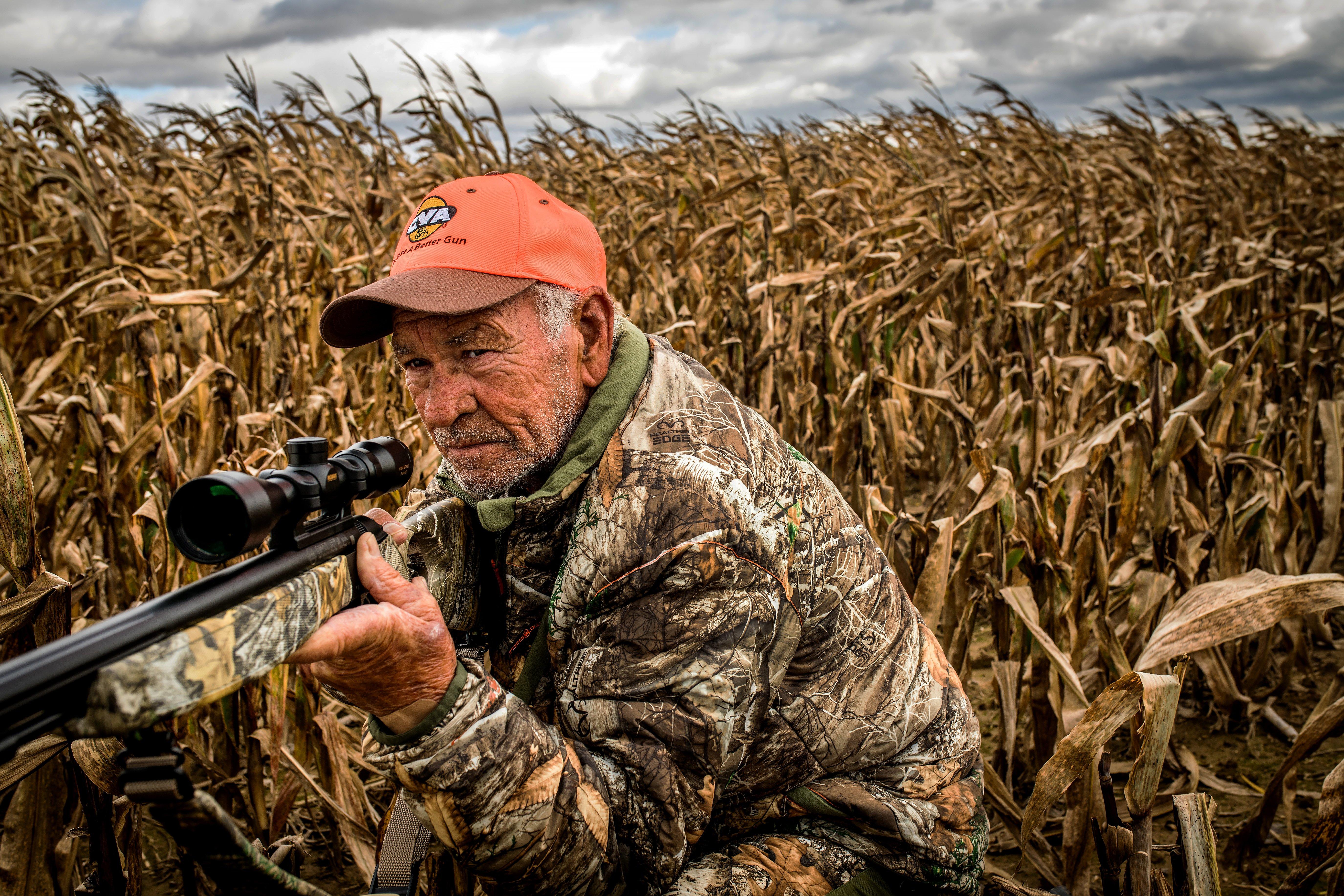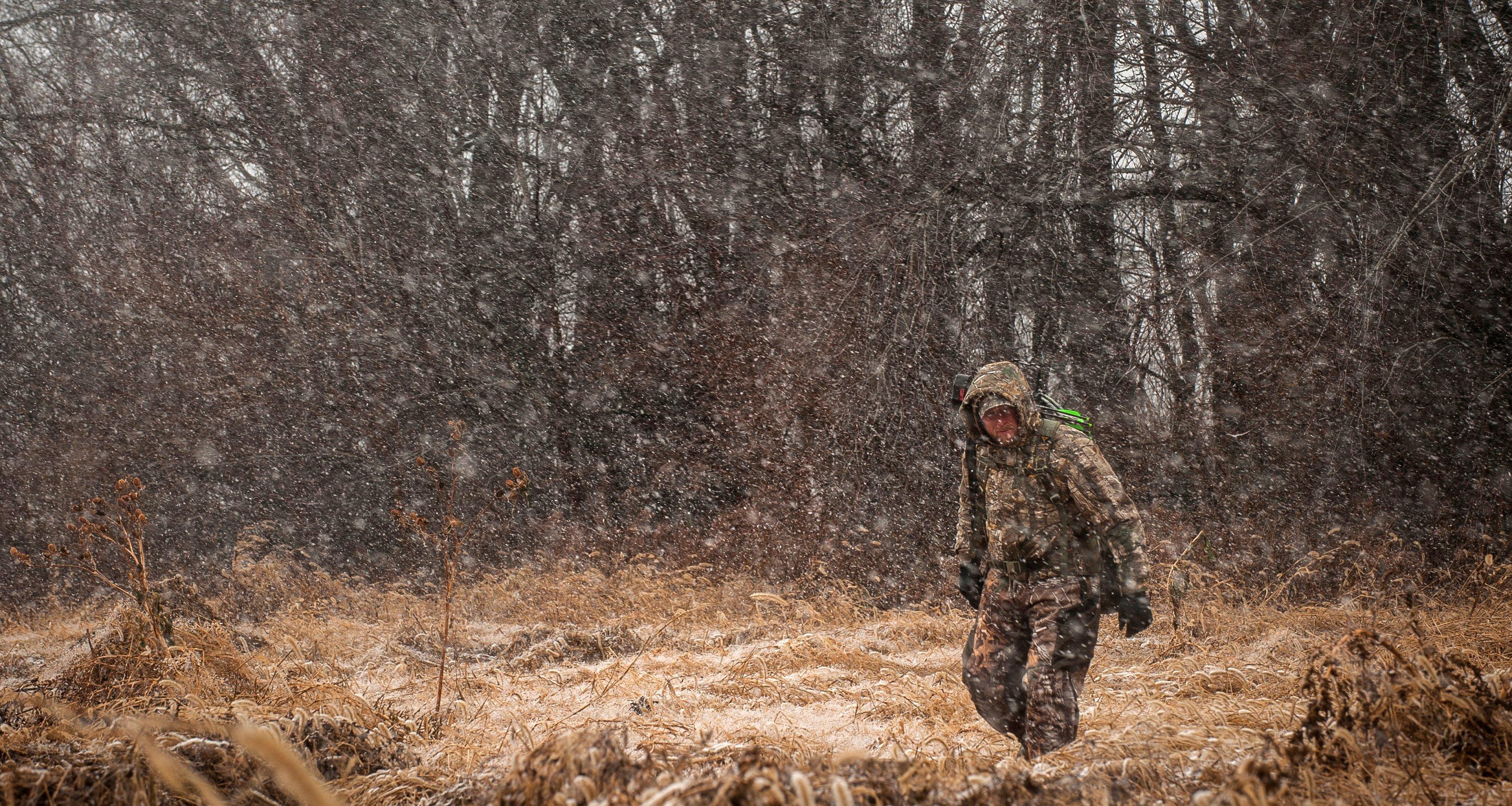Sometimes a wind forecast that’s not in your favor can be the one you need to get a shot at a mature deer
Standard deer hunting advice says to never hunt a bad wind — but the truth is taking chances on the wind can be the best way to get in front of a mature buck in some circumstances. Bucks don’t always walk with the wind in their face, but they do constantly use it. They will often circle downwind of bedding areas when scent-checking for does, and they frequently check the wind for danger when they’re suspicious of something. They’ll use crosswinds to their advantage whenever they can. Knowledgeable and prepared hunters know how to put a “bad wind” directly in their favor in circumstances like these.

Wind-bumping is a great two-man deer drive tactic. Image by Bill Konway
1. DOWNWIND ROUTES
Bucks prefer to travel downwind of certain areas, including bedding cover in the mornings. They tend to fishhook into the wind and use their nose to ensure no danger is close to their bedroom. You can see similar behavior during the rut as bucks cruise the downwind sides of doe bedding areas in search of estrus does. They tend to favor the downwind sides of travel routes like pinch points and tree lines, too.
- How to Hunt It: In all these scenarios, hunters can be successful by setting up in standalone trees that are just off the edge of the travel route, and out of the primary wind current just enough to remain undetected.
2. STRONG THERMALS
Thermals are columns of air that rise and fall depending on the time of day and temperature differentials. Generally, when the early morning sun warms the atmosphere, air particles begin rising. When the late-afternoon sun fades and everything cools off, air particles begin falling. Deer know this and use particular trails and bedding areas to take advantage of thermals.
- How to Hunt It: Rising thermals make ridge tops productive places to hunt early in the morning, since the thermals can carry your scent up and away from deer regardless of the wind direction.
3. LEEWARD RIDGES
A leeward ridge is the downwind side of a ridge line. The prevailing wind comes over the top, and morning thermals rise from below. This can create a tunneling effect, and can sometimes push air currents parallel to the ridge, especially if the prevailing wind hits the ridge line at an angle. In the right locations, it can allow bucks to smell danger from multiple directions, and so leeward ridges are frequent travel routes.
- How to Hunt It: Hunters can’t set up above or below bucks without being smelled. However, hunting perpendicular (from the same elevation the buck is on), can keep your wind out of his nose.

Setting up in a spot with a just-off wind is a solid approach for those targeting a mature buck. Image by Bill Konway
4. THERMAL HUBS
Thermal hubs are created by multiple ridge lines tapering into the same bottomland. In the evening, when thermals are falling, whitetails can gather at the hub and scent check from multiple directions.
- How to Hunt It: Hunters can set up on the lowest side of the hub so that their scent continues to fall away from deer. This scenario almost always appears to be a bad-wind situation to hunters who don’t know how to capitalize on it. It’s a great one for those who do.
5. JUST-OFF WINDS
This is a risky but productive tactic. Think of it like hunting an extreme crosswind. You’re looking to set up just off a wind current that’s mostly in the deer’s favor.
- How to Hunt It: This requires the right ambush, where you can set up just off the edge of where the buck can smell you, but still within range. For example, a buck might travel a tree line with his nose into the wind. But your treestand is positioned about 20 yards off that tree line in a standalone oak. With a consistent breeze, the idea is for the buck to walk parallel to your scent cone without catching it.
6. WIND BUMPING
Wind-bumping is a tactic that hunters use to nudge deer toward shot opportunities, and you can use it on days when bad winds make it tough to set up anywhere else. This isn’t like a traditional deer drive, where multiple people push through cover and force deer into specific areas, though.
- How to Hunt It: It requires an understanding of common escape routes, and then sending one pusher upwind of a bedded deer, and one shooter setting up along the expected escape route. Obviously, exercise utmost caution and safety with any form of deer drive.
There are numerous ways that hunters can use “bad winds” to their advantage. Even when the odds seem to be in a buck’s favor, a hunter can place the odds in theirs instead. Hunting a bad wind in a good way can skyrocket the odds of seeing, and perhaps harvesting, that buck of a lifetime.
(Don’t Miss: DO BIG BUCKS FATHER MORE BIG BUCKS?)










